| Umělec magazine 2008/2 >> Utopias under Heritage Protection – Hansaviertel in Berlin | List of all editions. | ||||||||||||
|
|||||||||||||
Utopias under Heritage Protection – Hansaviertel in BerlinUmělec magazine 2008/201.02.2008 Tomas Ullman | urban design | en cs de es |
|||||||||||||
|
"The problem of rationalization and typification is only a secondary problem. Rationalization and typification are only the means, and can never be the end. The problem of the new residence is, in essence, a spiritual problem, and the disputation surrounding the new residence only a part of the great struggle towards a new form of life."
Mies van der Rohe (Introduction to the exhibition catalogue for the Weißenhofsiedlung in Stuttgart, 1927) What now remains from this ambition to use architecture and urban planning to create a better living space for the modern human subject, or even a better society as a whole? This question was placed last year to 15 invited artists, under the direction of the curators Annette Maechtel, Christine Heidemann and Kathrin Peters. To commemorate the 50th anniversary of the exposition Interbau 1957, the artists took up the task, under the title The City of Tomorrow—Contributions to an Archaeology of the Hansaviertel in Berlin, of excavating this ruined Utopia. These contributions were then exhibited together in the Berlin Academy of the Arts on this district’s main road, Hanseatenweg. Linguistically, this goal announced itself appropriated the sub-heading of the first large-scale architectural exposition of the immediate post-war years in Germany. Under the title The City of Tomorrow, the present Hansaviertel, lying in the centre of West Berlin, was consecrated to the task of serving as the model for a modern, “Western” city—green, functional, transparent. It was a unique building project, and one truly radical and ground-breaking at the time of completion. The unusual political daring in supporting architectural experimentation, in then-divided Berlin, was provoked by the intensively publicized awakening of democracy after the end of fascism. Individuality and internationalism, forcibly suppressed under Nazi rule, were consciously elevated to the level of a principle. The second factor was the competition between the political systems of East and West: five years earlier, in the eastern zone of the city, a gigantic development had emerged in the Stalinallee. Following the Soviet example, a homogeneous series of imposing “workers’ palaces”, containing 3000 new flats, arose along a single dominant axis. Despite all its ideological criticism of the Stalinallee, though, the housing policy of its Western counterpart represented no project of any comparable size; for propaganda purposes, this was a clear defeat. At the time, it was necessary to find a project that would demonstrate West Berlin to be economically viable as a unit, and supported by the entire free world. As a result, the idea emerged of an international architectural exposition that would bring the ideas of the functionalist building program espoused in the 1920s into a thorough mixture of city and nature, into the creation of what was termed a “city landscape” [Stadtlandschaft]. In this respect, the wartime destruction of the 19th-century urban fabric of the old Hansaviertel was actually a fortunate event. Here, in direct proximity to Berlin’s central park, the Tiergarten, it became possible for the dream of an urban tabula rasa, a new beginning with no connections to earlier structures or recollections of the horror of the Nazi regime, to come into being. The 53 participating architects—19 from abroad, 16 from the Federal Republic, and 18 from West Berlin—were instructed, in the words of the commission from the Berlin city council, to create a neighborhood that “stood as an expression of the architectural sentiments of the forms of thought and lives of the free peoples of the world”. Among the participants numbered such internationally renowned architects as Alvar Aalto, Egon Eiermann, Walter Gropius, Arne Jacobsen, Oscar Niemeyer or Max Taut. The presence of these star talents of modern architecture likewise allowed the architects who had remained in Nazi-ruled Germany the sense of once again belonging to the world. In the area bordered by the elevated rail line, the Spree river and the Tiergarten, a wide variety of building typologies arose: free-standing tower blocks with 16 to 17 floors, raised pergola-blocks, longer rows of three to four stories, “slab blocks” of eight to ten floors yet far longer than their height, and single-family houses in addition to four courtyard buildings. Nor was the infrastructure of the neighborhood neglected: one kindergarten, two churches, and a shopping centre with cinema and public library. Constructed outside of the actual exposition area were a primary school (Bruno Grimmek), the famous Berlin “Kongresshalle” (Hugh Stubbins) as well as a 17-storey slab block containing 530 flats, from a design by Le Corbusier (in his “Unité d’habitation” typology). In each of the apartment blocks, great pains were taken to create economical yet strikingly innovative plans for the residential spaces. These new ideas for the interior, presented to the public in display flats complete with modern built-in kitchens, tiled baths, central heating and light, easily adaptable furniture, were a great attraction in a city still scarred by wartime damage and with thousands of its citizens living in temporary accommodations. Alongside the oft-discussed split-level and maisonette plans, Alvar Aalto’s “universal room” is one typical example: a large room placed at the centre of the floor plan, a recreational space for the entire family, where even children could play. In short, it's a kind of democratization of the German living room. “Interbau” operated on the principle of a “living construction site.” Only one in three of the buildings was completed at the time of the project's opening. Visitors could watch the buildings being constructed, while at the same time the future residents were provided with a special preview of their lives in the new city. The practical instructions for inhabitants included samples of how to apportion the space and choices of wall and floor coverings, as well as advice on furniture for children’s rooms and kitchens for the pleased housewife. Very often, though, the ideas of the architects had to be modified or curtailed for pragmatic reasons. Le Corbusier and Oscar Niemeyer, in fact, viewed the alterations as so damaging that in later years both of them distanced themselves from their Berlin buildings. Above all, the buildings of Interbau were notably costly: as expensive prestige objects, they hardly offered a directly applicable model for later residential projects. For financial reasons, the two symbols of the competing political systems in divided Berlin—the Stalinallee and the Hansavierte—both remained unique. The entire Hansaviertel is now a protected heritage site. Exhibit, events, film screenings: www.diestadtvonmorgen.de (also available in English) Jan Otakar Fischer Berlin’s Hansaviertel at 50: A postwar future gains a new present” International Herald Tribune, Sept. 24, 2007 www.iht.com Publications accompanying the exhibition (all in German): “Die Stadt von morgen: Beiträge zu einer Archäologie des Hansaviertels Berlin” Annette Maechtel, Kathrin Peters (eds.) , Verlag der Buchhandlung Walther König, Köln 2008 Deutschlandradio Kultur – Zeitreisen: “Die Stadt von morgen vor 50 Jahren: Internationale Bauausstellung in West-Berlin” Kirsten Heckmann-Janz Zeitschrift “Von hundert” “Die Stadt von morgen” July 2007 Andreas Koch www.kunst-blog.com Christoph Bannat “Die Stadt von morgen” Frank Manuel Peter “Das Berliner Hansaviertel und die Interbau 1957” Sutton Verlag 2007
01.02.2008
Recommended articles
|
|||||||||||||
|
04.02.2020 10:17
Letošní 50. ročník Art Basel přilákal celkem 93 000 návštěvníků a sběratelů z 80 zemí světa. 290 prémiových galerií představilo umělecká díla od počátku 20. století až po současnost. Hlavní sektor přehlídky, tradičně v prvním patře výstavního prostoru, představil 232 předních galerií z celého světa nabízející umění nejvyšší kvality. Veletrh ukázal vzestupný trend prodeje prostřednictvím galerií jak soukromým sbírkám, tak i institucím. Kromě hlavního veletrhu stály za návštěvu i ty přidružené: Volta, Liste a Photo Basel, k tomu doprovodné programy a výstavy v místních institucích, které kvalitou daleko přesahují hranice města tj. Kunsthalle Basel, Kunstmuseum, Tinguely muzeum nebo Fondation Beyeler.
|







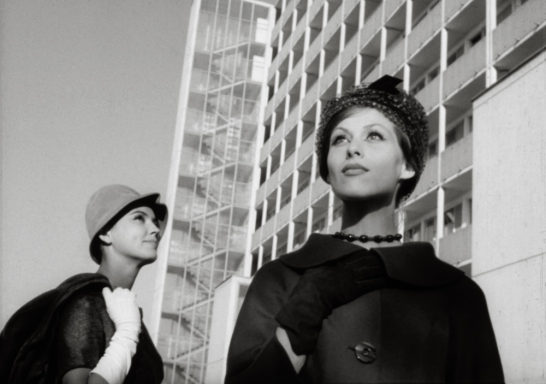
















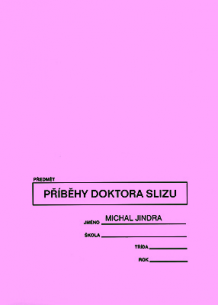




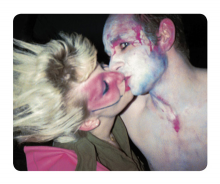
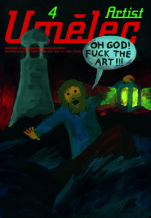
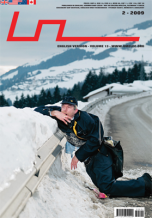
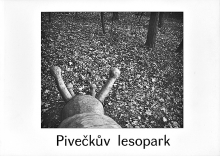


 We Are Rising National Gallery For You! Go to Kyjov by Krásná Lípa no.37.
We Are Rising National Gallery For You! Go to Kyjov by Krásná Lípa no.37.
Comments
There are currently no comments.Add new comment